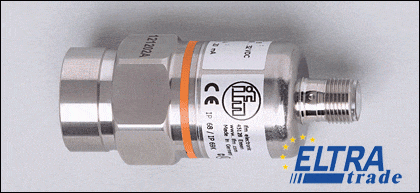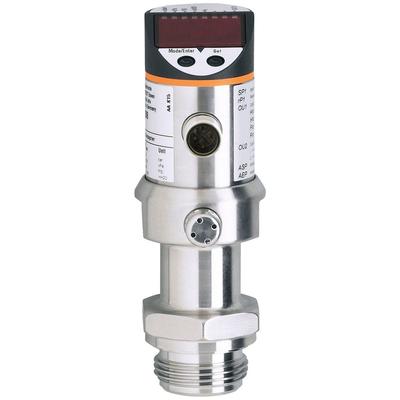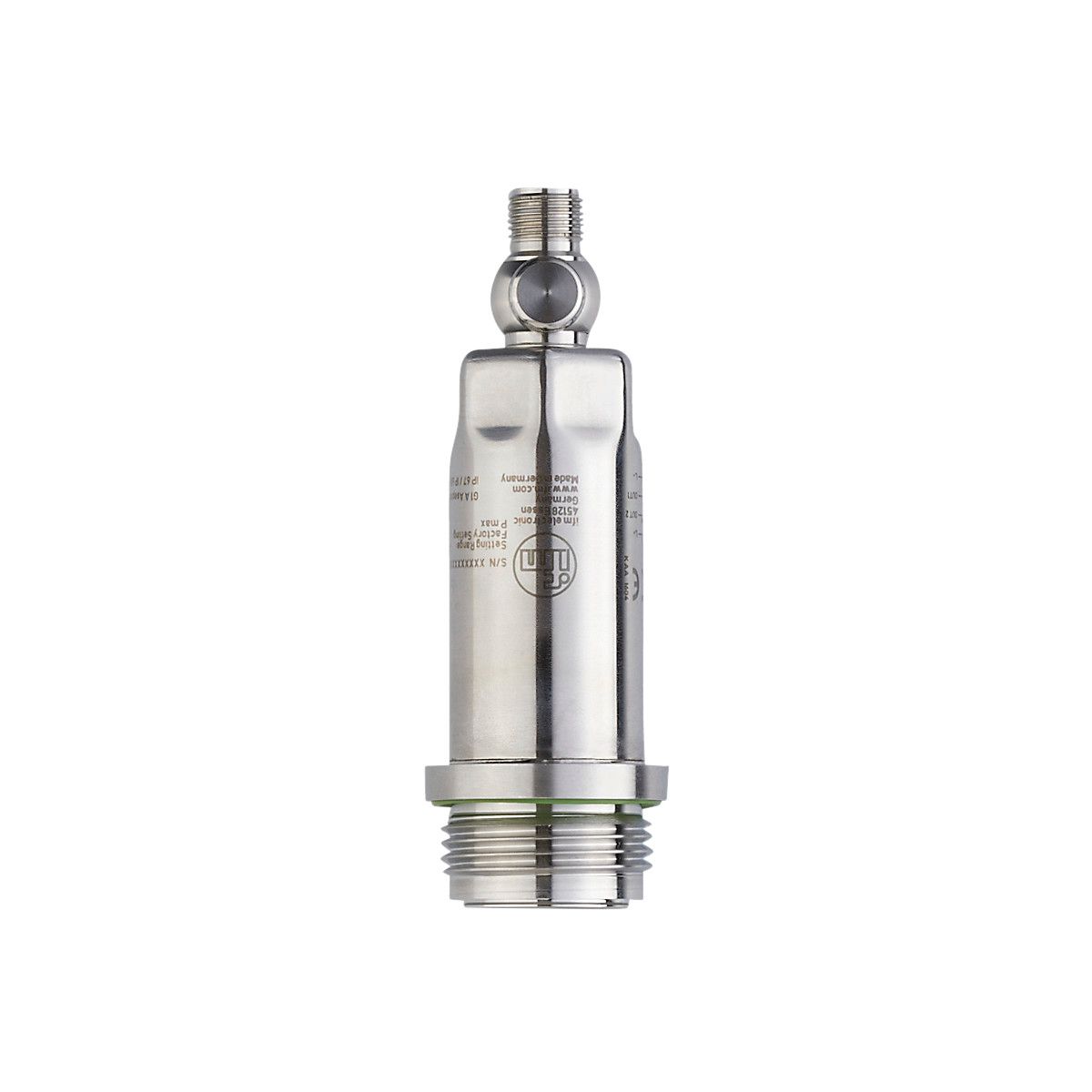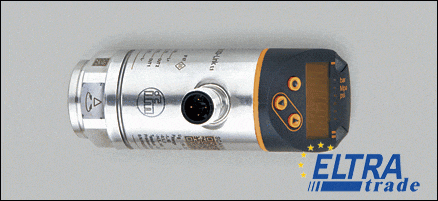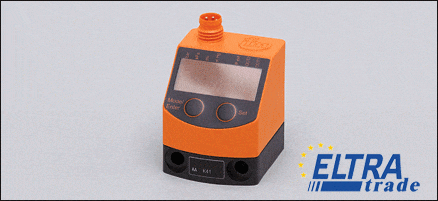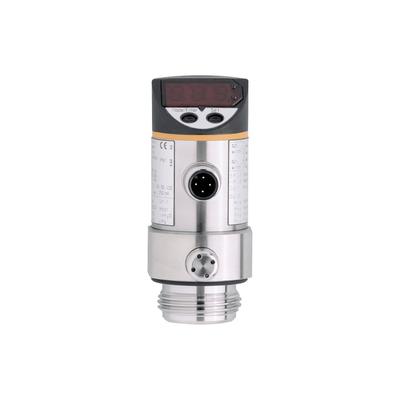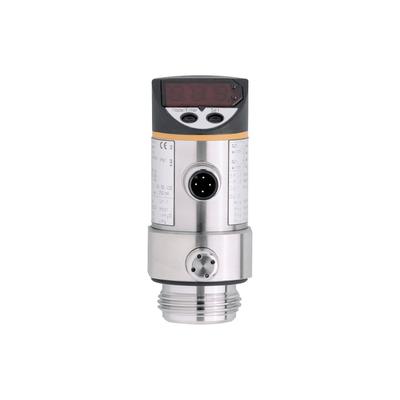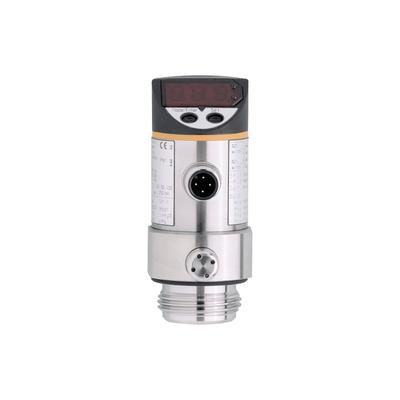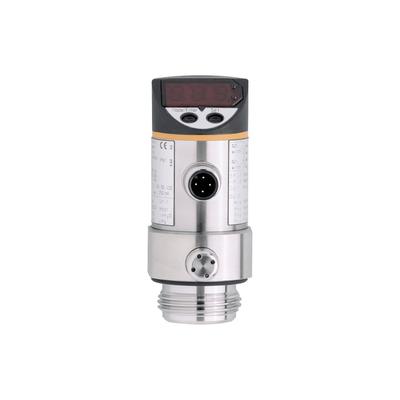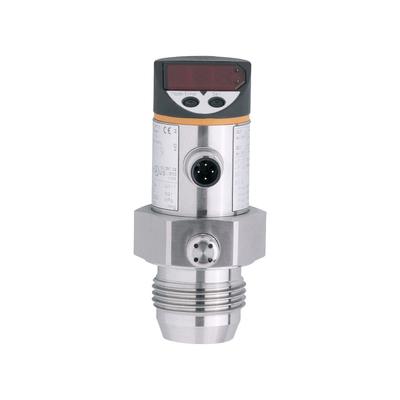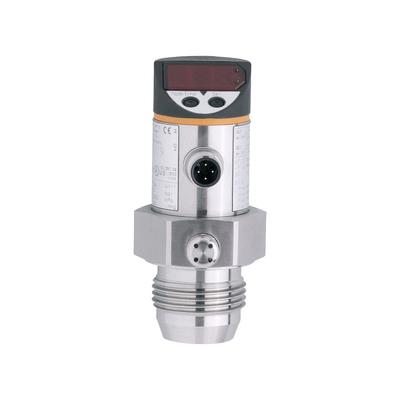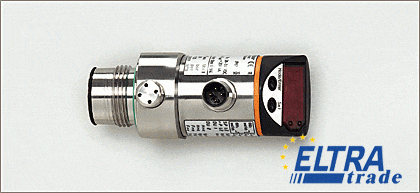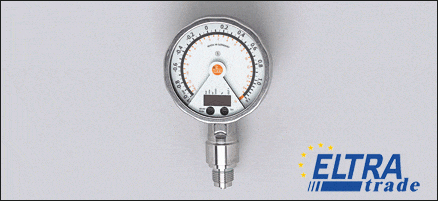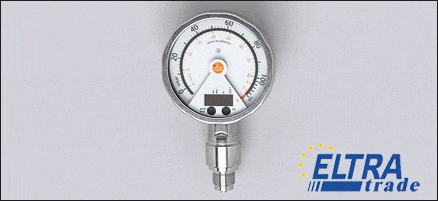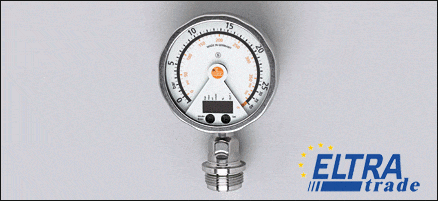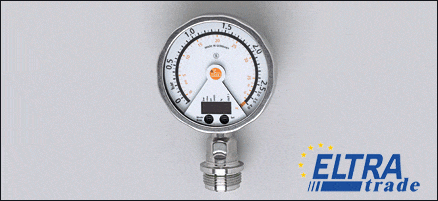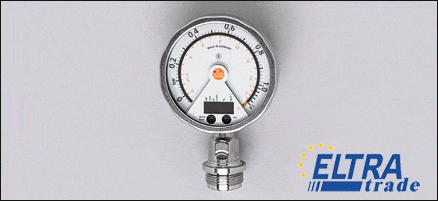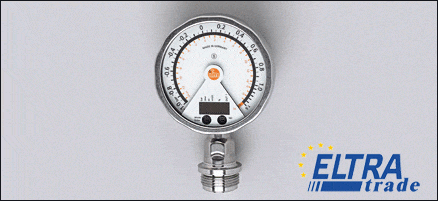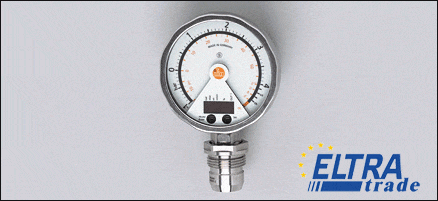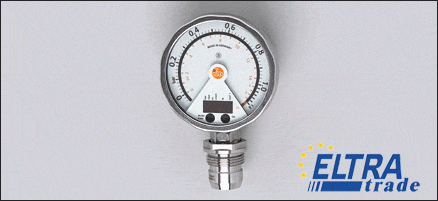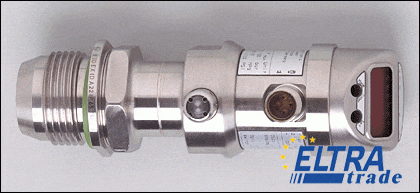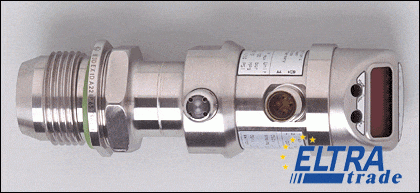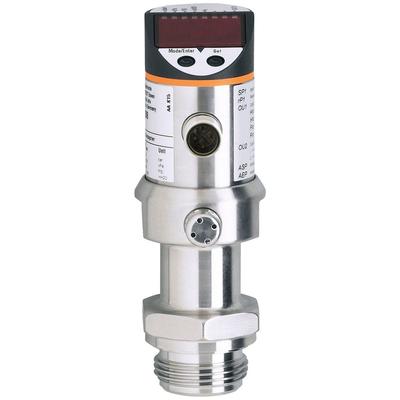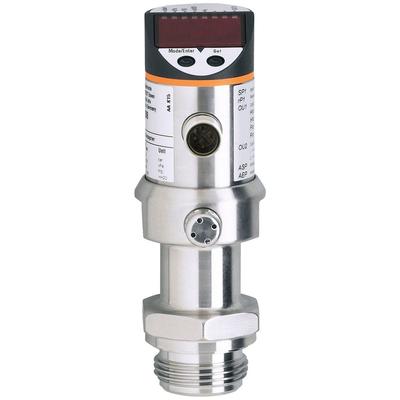IFM Pressure sensors
Electronic pressure sensor, DC, e1 compliant, Connector, Analogue output
Electronic pressure sensor, DC, e1 compliant, Connector, Analogue output
- PI-010-RES30-MFRKG/US/ /P
- -14.5...145psi
- -0.1...1MPa
IN STOCK!!!
Electronic pressure sensor PM1707 with gold-plated contacts.
IN STOCK!!!
M12 connector, 4-digit alphanumeric display, 2 outputs
PN-010-RER14-MFRKG/US/ /V
Electronic pressure sensor, DC PNP, Adjustment of the switch point by teach function, Connector, 2 outputs, OUT1 = switching output, OUT2 = switching output or diagnostic output
- DC NPN
- Function programmable
- 4-digit alphanumeric display
- 2 outputs
- OUT1 = switching output
- OUT2 = switching output or diagnostic output
- 4-digit alphanumeric display
PF-025-RES30-MFRKG/US/ /P
PF-010-RES30-MFRKG/US/ /P
PF-2,5-RES30-MFRKG/US/ /P
PF-001BRES30-MFRKG/US/ /P
PF-,25-RES30-MFRKG/US/ /P
PF-1-1BREA01-MFRKG/US/ /P
PF-025-REA01-MFRKG/US/ /P
Combined pressure sensor, DC PNP/NPN, no dead space, Freely rotatable housing 350°, Zero and span adjustable, Function programmable, Connector, 7-segment LED display, 2 outputs, OUT1 = switching output, OUT2 = switching output or analogue output, 7-segment LED display
Electronic pressure sensor, with analogue display, DC PNP/NPN, Analogue display 0...350° rotatable, Resolution 0.25%, Pointer not visible when unit disconnected, Connector, analogue display, 4-digit alphanumeric display, 2 outputs, OUT1 = switching output, OUT2 = analogue output, 4-digit alphanumeric display
Electronic pressure sensor, with analogue display, DC PNP/NPN, Analogue display 0...350° rotatable, Resolution 0.25%, Pointer not visible when unit disconnected, Connector, analogue display, 4-digit alphanumeric display, 2 outputs, OUT1 = switching output, OUT2 = analogue output, 4-digit alphanumeric display
Electronic pressure sensor, with analogue display, DC PNP/NPN, Analogue display 0...350° rotatable, Resolution 0.25%, Pointer not visible when unit disconnected, Connector, analogue display, 4-digit alphanumeric display, 2 outputs, OUT1 = switching output, OUT2 = analogue output, 4-digit alphanumeric display
Electronic pressure sensor, with analogue display, DC PNP/NPN, Suitable for all standard CIP and SIP processes, Analogue display 0...350° rotatable, Resolution 0.25%, Pointer not visible when unit disconnected, no dead space, Connector, analogue display, 4-digit alphanumeric display, 2 outputs, OUT1 = switching output, OUT2 = analogue output, 4-digit alphanumeric display
Electronic pressure sensor, with analogue display, DC PNP/NPN, Suitable for all standard CIP and SIP processes, Analogue display 0...350° rotatable, Resolution 0.25%, Pointer not visible when unit disconnected, no dead space, Connector, analogue display, 4-digit alphanumeric display, 2 outputs, OUT1 = switching output, OUT2 = analogue output, 4-digit alphanumeric display
Electronic pressure sensor, with analogue display, DC PNP/NPN, Suitable for all standard CIP and SIP processes, Analogue display 0...350° rotatable, Resolution 0.25%, Pointer not visible when unit disconnected, no dead space, Connector, analogue display, 4-digit alphanumeric display, 2 outputs, OUT1 = switching output, OUT2 = analogue output, 4-digit alphanumeric display
Electronic pressure sensor, with analogue display, DC PNP/NPN, Suitable for all standard CIP and SIP processes, Analogue display 0...350° rotatable, Resolution 0.25%, Pointer not visible when unit disconnected, no dead space, Connector, analogue display, 4-digit alphanumeric display, 2 outputs, OUT1 = switching output, OUT2 = analogue output, 4-digit alphanumeric display
Electronic pressure sensor, with analogue display, DC PNP/NPN, Suitable for all standard CIP and SIP processes, Analogue display 0...350° rotatable, Resolution 0.25%, Pointer not visible when unit disconnected, no dead space, Connector, analogue display, 4-digit alphanumeric display, 2 outputs, OUT1 = switching output, OUT2 = analogue output, 4-digit alphanumeric display
Electronic pressure sensor, with analogue display, DC PNP/NPN, Suitable for all standard CIP and SIP processes, Analogue display 0...350° rotatable, Resolution 0.25%, Pointer not visible when unit disconnected, Sealing cone G1 male, Connector, analogue display, 4-digit alphanumeric display, 2 outputs, OUT1 = switching output, OUT2 = analogue output, 4-digit alphanumeric display
Electronic pressure sensor, with analogue display, DC PNP/NPN, Suitable for all standard CIP and SIP processes, Analogue display 0...350° rotatable, Resolution 0.25%, Pointer not visible when unit disconnected, Sealing cone G1 male, Connector, analogue display, 4-digit alphanumeric display, 2 outputs, OUT1 = switching output, OUT2 = analogue output, 4-digit alphanumeric display
Electronic pressure sensor, with analogue display, DC PNP/NPN, Suitable for all standard CIP and SIP processes, Analogue display 0...350° rotatable, Resolution 0.25%, Pointer not visible when unit disconnected, Sealing cone G1 male, Connector, analogue display, 4-digit alphanumeric display, 2 outputs, OUT1 = switching output, OUT2 = analogue output, 4-digit alphanumeric display
Combined pressure sensor, DC PNP/NPN, Freely rotatable housing 350°, Zero and span adjustable, Function programmable, ATEX approval, Group II, category 3D/3G, Sealing cone G1 male, Connector, 4-digit alphanumeric display, 2 outputs, OUT1 = switching output, OUT2 = analogue output, 4-digit alphanumeric display
Combined pressure sensor, DC PNP/NPN, Freely rotatable housing 350°, Zero and span adjustable, Function programmable, ATEX approval, Group II, category 3D/3G, Sealing cone G1 male, Connector, 4-digit alphanumeric display, 2 outputs, OUT1 = switching output, OUT2 = analogue output, 4-digit alphanumeric display
PI-025-RES30-E-ZVG/US/ /P
PI-001BRES30-E-ZVG/US/ /P
A pressure sensor is a sensitive element that reacts in a certain way to changes in pressure. That is, the created pressure directly changes the properties of the sensor (capacitance, resistance, etc.), and thus, we obtain information about this pressure.
Today we will get acquainted with how IFM pressure sensors work and also with what types of pressure sensors exist.
What are IFM Pressure Sensors Used For?
IFM electronic pressure sensors are mainly used in the food or chemical industries. A particularly interesting option can be called a practical and modern intelligent sensor that serves to measure absolute pressure, as well as realize the measurement relative to the value of absolute vacuum. This measurement is most often used where it is necessary to quickly take into account the pressure of the gas, steam, or thermal energy.
According to the design of the sensitivity elements, the sensors are divided into fiber-optic and optoelectronic. The former turn on the optical waveguide and determine the pressure as a result of light polarization. The latter conduct light through a multilayer structure, each layer of which changes its properties depending on the pressure of the medium.
And now consider the most popular areas of application of pressure sensors.
- Detection of water leaks using a pressure sensor. Several pressure sensors can be attached to pipes above or below ground to help detect a break or leak in the pipe. The exact location of the leak is determined by the sensor that shows the largest pressure drop. The wireless pressure sensor also allows for remote monitoring of leaks.
- Gas leak detection with a pressure sensor. In order to detect a gas leak, you will need a reference pressure against which the pressure entering the tank will be measured. If the pressure drops, the output increases, indicating a leak.
- Gas pressure control. When a non-flammable gas is stored in a tank, a pressure transducer can be used to measure the pressure and how that pressure can be affected by environmental factors such as solar heat or low temperatures. When measuring flammable gases, you will need an explosion-proof transmitter or a hazardous pressure transmitter that is certified safe for use with explosive gases.
What are the Types of Pressure Sensors?
Next, we will look at the IFM pressure sensor catalog.
Differential pressure sensor
Such a sensor helps to successfully solve the problems of accounting for the consumption of the measured medium. The principle of its operation is to measure the pressure differences between two adjacent cavities - plus and minus.
It is used for successful cost accounting. The narrow device in communications is local resistance. In the process of passing through it, the nature of the flow velocity changes. Before this narrowing device, the pressure in the atmosphere will increase significantly, and after it will decrease.
The higher the coefficient reaches the difference at the inlet, and then at the outlet of the narrowing device, the higher will be the flow rate of the medium that flows through this pipe. Such a sensor without any problems will make it possible to take into account the volume of this liquid not only in the pipe itself but also in this container. This can be done by measuring the pressure in the liquid column that acts on the positive membrane.
In addition, in some cases, the results are measured in the negative pressure cavity, which is located directly under the dome of this vessel. This is necessary in order to reliably eliminate the excessive influence of most saturated vapors. This method is called hydrostatic.
Overpressure sensor
This sensor is needed for successful adjustment and further control of all technical processes. It can be used as part of most water systems used for further heating; is included in the necessary package of units that serve for commercial and full-fledged technological accounting of all required liquids, gases, and steam.
Absolute pressure sensors
This includes smart transmitters capable of handling continuous measurement of absolute and gauge pressures. Such devices are also indispensable assistants in cases where you need to simultaneously find out the exact value of differential or hydrostatic pressure, and determine the pressure in rarefied, liquid or gaseous media in which saturated or superheated steam is located.
The complex design of the pressure sensor allows it to be used for its intended purpose. Such a device is used in conditions of low and high temperatures, as well as in the most aggressive environments.
In each of the sectors of the economy, the need for a particular sensor is determined in a purely individual way, as well as a real need. The choice of the device depends on what tasks are set for it, as well as on the current operating conditions. The customer independently chooses the material required for the manufacture of the separation membrane, as well as the housing of the electronic unit.
If you want to learn more about this type of sensor then you can check out the IFM pressure sensor manual.
